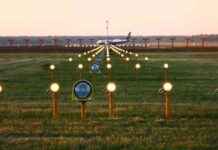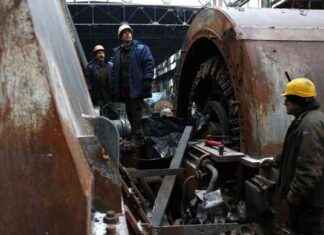As the new editor-in-chief of dagens nyheter in 2013, I had quickly become accustomed to regularly stand held accountable in the investigative radio program ”the Media”. It is very useful to answer their questions, because the reporters often find weaknesses in our reporting and are forcing public declarations. It leads in turn to our journal to sharpen us – and hopefully do a better job.
was about DN’s coverage outside of Stockholm and if medieskuggan over large parts of Sweden. The presenter Martin Wicklin wondered why we do not detail told about the dramatic demonstrations in Kallak outside of Jokkmokk. Even the Washington Post had done a story on the infected battle where the sami people and environmentalists protested against exploration drilling for ore, enlightened Wicklin. In DN, it was quiet.
I gave a lousy answer to the ongoing nyhetsdramatiken in Egypt and Syria had competed much of the other reporting.
Martin Wicklins supplementary question was given: Consider DN the northern region as part of the utrikesbevakningen?
In recent years we have begun to correct the geographical bias in our reporting. It was easier to do when the fully digital subscriptions began to grow from a few thousand by the year 2015 to the current 160 000, in addition to all of the readers who follow us in the paper. Suddenly emerged financial ability to do journalistic bets, thanks to the new plans.
Riksnätverket, where DN is working with the freelancer over the whole of Sweden, was a step in that direction. It includes a 15 journalists from the north to the south.
to deepen the coverage outside of Stockholm, sweden by opening an editorial office in Gothenburg with five employees – up to now we have only had an employee journalist in the city. DN will recruit reporters to the landline services and offer readers a continuous local reporting.
in recent years, many have heard of from just the west of Sweden, where we have grown rapidly with the digital subscriptions. Gothenburg has in a short time become the DN’s second-largest city in terms of number of paying readers. Those who contact us often say they appreciate the Today’s News, but that we and the other riksmedierna is too Stockholmsfixerade.
I can only agree with: it is an embarrassment to the coverage of western Sweden is so limited.
It is an embarrassment to the coverage of western Sweden is so limited.
Gothenburg is the centre of a region that is crucial for Sweden. The country’s largest companies, Volvo seems from there, it happens very exciting around the university and institutions of higher education, political, Gothenburg is now a laboratory for innovation that deserves national attention.
extensive journalistic coverage, and then I have not had time to mention sport, culture and issues of integration and crime, which also has great significance.
It costs several million to open a team who will devote themselves to lokalbevakning, so the decision has not been easy. But when the government announced that the digitalmomsen shall be reduced to the same level as for print media dared to, we bet.
Newspapers across the western world has had economic difficulties of the last decades, in pace with the previous main source of revenue – money from ads in the print media – began to dry out. International giants such as Google and Facebook takes the majority of the digital reklamtillväxten, without paying a dime to produce journalism.
Many media companies tend to blame their shortcomings on the u.s. techjättarna, and certainly there is heavy criticism to direct against them. But the problems in the media industry is also due to the fact that several newspapers have had a flawed strategy.
ranging from costly imperial ambitions, which crashed to the ill-considered mångmiljoninvesteringar in self-produced tv, with weak coupling to what had been requested by tidningsläsarna.
instead of to lift up and wager on unique journalism got a lot of mediechefer in addition, that they produce ”content” (content), pumped out the free online with the hope of lots of clicks to generate advertising revenue. Clean annonsbudskap have, at times, mixed in with serious news reporting. Understanding why readers once started subscribe has been weak.
instead of lifting up and bet on the unique journalism got a lot of mediechefer in addition, that they produce ”content”
The classic design and craftsmanship of some of the industry players have been regarded as less valuable in a digitized world. Thus have the newspapers made themselves into a kind of dussinvara to the end is not worth paying for – the ”content” is available free in abundance on the internet. Some local newspapers have released the anchor to their own community by republishing material from sites with little relevance to your readership.
for a number of years, there was an uncertainty also internally on the DN, in a situation where the economy has significantly worsened and we were forced to cut down. How would we survive? What was the right way forward?
in some traps, but a deliberate focus on qualitative journalism made it possible for us to grow through digital subscriptions, at the side of the printed newspaper. It has strengthened the DN’s economy and created a good spiral. Since 2014 we have been able to fastanställa more than 60 journalists, which further helped the growth of the number of subscriptions.
It is not a strategy that works for all the newspapers, but we do know at this point that the ambitious journalism is appreciated so much that many are willing to pay for it, even in digital form.
It is a very encouraging signal at a time when the freedom of the media is set in a historic press in large parts of the western world: economically and politically.
Journalists need democracy to be able to work freely, without political or commercial considerations. But without independent journalism in the whole of Sweden will not work in our democracy.








